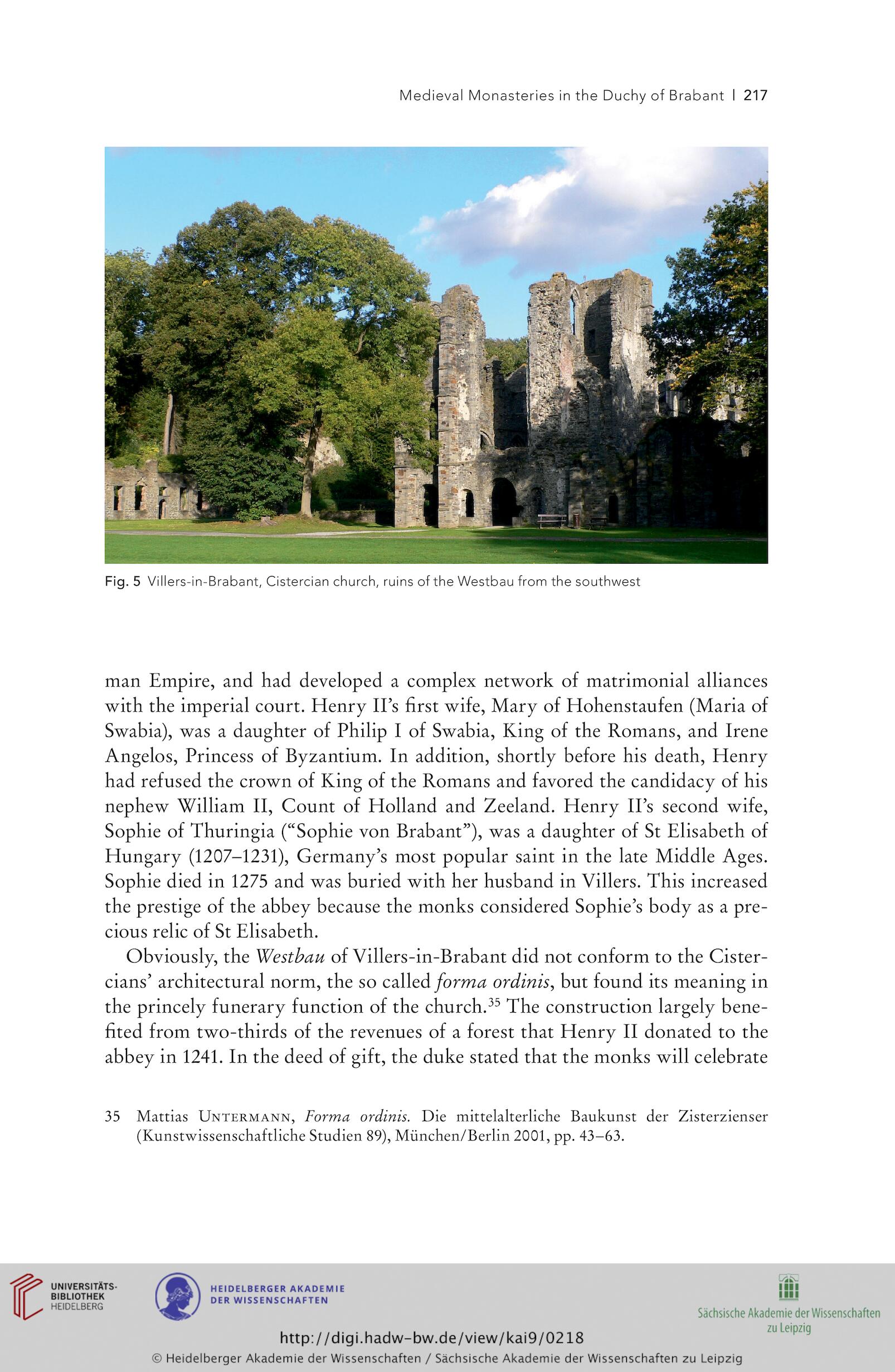Medieval Monasteries in the Duchy of Brabant I 217
Fig. 5 Villers-in-Brabant, Cistercian church, ruins of the Westbau from the southwest
man Empire, and had developed a complex network of matrimonial alliances
with the imperial court. Henry Il's first wife, Mary of Hohenstaufen (Maria of
Swabia), was a daughter of Philip I of Swabia, King of the Romans, and Irene
Angelos, Princess of Byzantium. In addition, shortly before his death, Henry
had refused the crown of King of the Romans and favored the candidacy of his
nephew William II, Count of Holland and Zeeland. Henry Il's second wife,
Sophie of Thuringia ("Sophie von Brabant"), was a daughter of St Elisabeth of
Hungary (1207-1231), Germany's most popular saint in the late Middle Ages.
Sophie died in 1275 and was buried with her husband in Villers. This increased
the prestige of the abbey because the monks considered Sophie's body as a pre-
cious relic of St Elisabeth.
Obviously, the Westbau of Villers-in-Brabant did not conform to the Cister-
cians' architectural norm, the so called forma ordinis, but found its meaning in
the princely funerary function of the church.35 The construction largely bene-
fited from two-thirds of the revenues of a forest that Henry II donated to the
abbey in 1241. In the deed of gift, the duke stated that the monks will celebrate
35 Mattias Untermann, Forma ordinis. Die mittelalterliche Baukunst der Zisterzienser
(Kunstwissenschaftliche Studien 89), München/Berlin 2001, pp. 43-63.
Fig. 5 Villers-in-Brabant, Cistercian church, ruins of the Westbau from the southwest
man Empire, and had developed a complex network of matrimonial alliances
with the imperial court. Henry Il's first wife, Mary of Hohenstaufen (Maria of
Swabia), was a daughter of Philip I of Swabia, King of the Romans, and Irene
Angelos, Princess of Byzantium. In addition, shortly before his death, Henry
had refused the crown of King of the Romans and favored the candidacy of his
nephew William II, Count of Holland and Zeeland. Henry Il's second wife,
Sophie of Thuringia ("Sophie von Brabant"), was a daughter of St Elisabeth of
Hungary (1207-1231), Germany's most popular saint in the late Middle Ages.
Sophie died in 1275 and was buried with her husband in Villers. This increased
the prestige of the abbey because the monks considered Sophie's body as a pre-
cious relic of St Elisabeth.
Obviously, the Westbau of Villers-in-Brabant did not conform to the Cister-
cians' architectural norm, the so called forma ordinis, but found its meaning in
the princely funerary function of the church.35 The construction largely bene-
fited from two-thirds of the revenues of a forest that Henry II donated to the
abbey in 1241. In the deed of gift, the duke stated that the monks will celebrate
35 Mattias Untermann, Forma ordinis. Die mittelalterliche Baukunst der Zisterzienser
(Kunstwissenschaftliche Studien 89), München/Berlin 2001, pp. 43-63.






